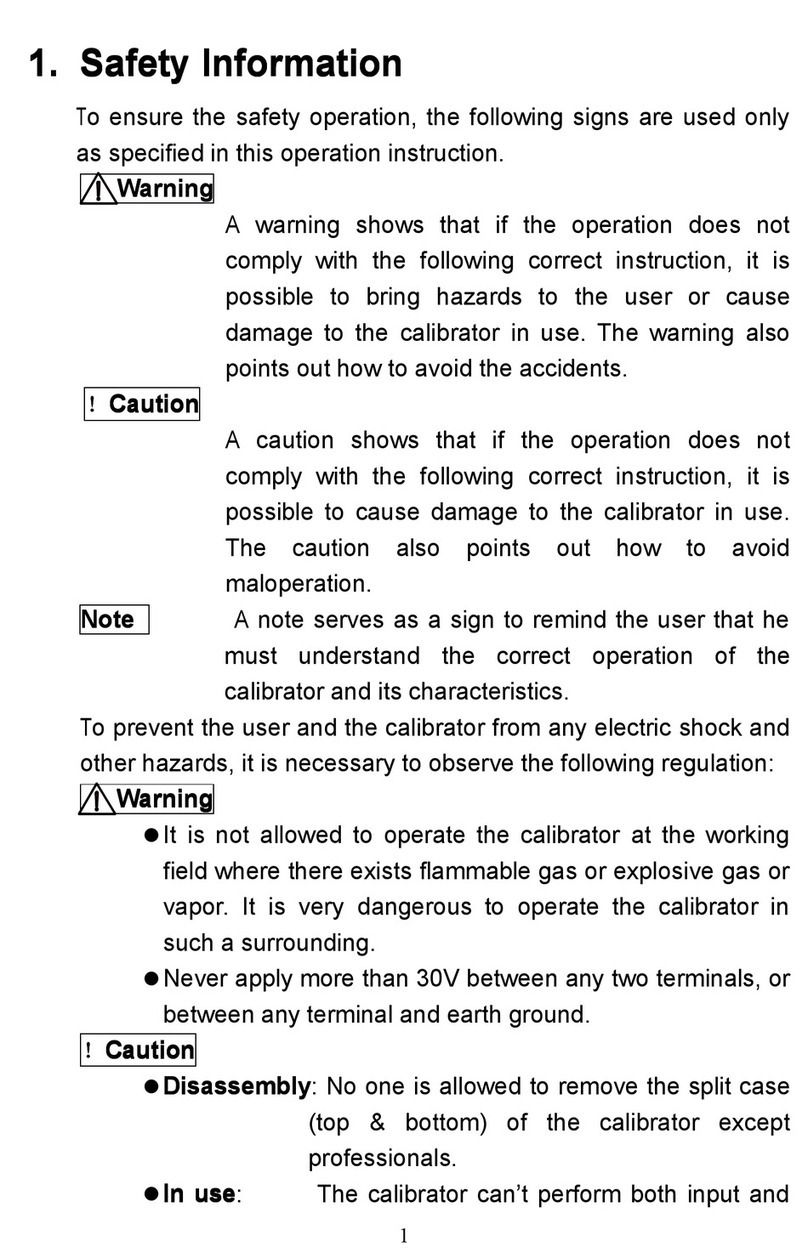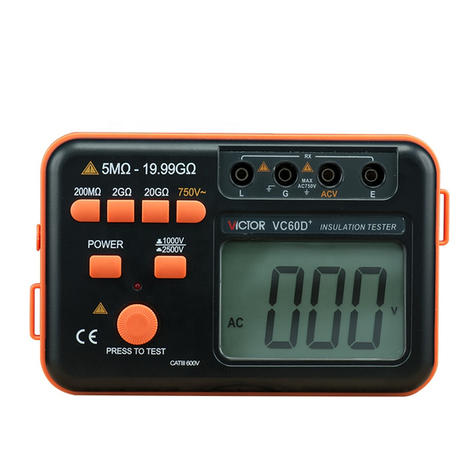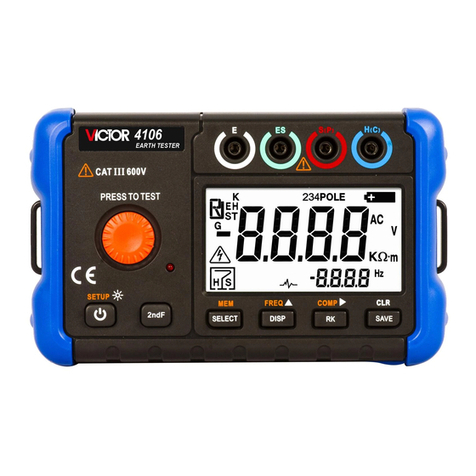- 9 -
Figure 5-1
5. Press 〔π〕/〔θ〕key , change the value of set bit, and
the value can carry or abdicate automatically, and
hold the key, the value will change constantly after
one second;
6. Press〔ZERO 〕key, the output will be set as
000.00mV or 0.0000V.
(2)
Thermocouple (TC )simulate output
1. Insert the testing probe into the jack of the meter’s
output terminal (OUTPUT) and connect the other
end with input terminal of the Users’ meter, see
Figure 5-1;
2. Press〔INPUT/OUTPUT〕key, select output function
3. Press 【FUN】 key , select thermocouple(TC)
function, and display ‘°C’ unit and ‘R’ graduation no.;
4. Press 〔RANG 〕key, select corresponding
graduation no.;
5. Press 〔τ〕/〔υ〕key, select output set bit;
6. Press〔π〕/〔θ〕key , change the value of set bit, and
the value can carry or abdicate automatically, and
hold the key, the value will change constantly after
one second.
7. Automatic compensation of cold junctions
When calibrating meter with temperature cold
junction compensation directly, press 〔RJ-ON〕key to
start the automatic compensation function of cold
junctions of this meter, and it will output the necessary
temperature thermoelectric force, and display ‘RJ-ON’.
(See detailed section for the accuracy of cold junction
compensation), and :
Output thermoelectric force = the corresponding
thermoelectric force of set temperature –the
corresponding thermoelectric force of room temperature
* The Users need to wait for 2 seconds when
starting the interior cold junction compensation of
the meter and the meter will make automatic
compensation every 10 seconds
* When the operation ambient temperature change,
the Users need to wait until the interior
compensation sensor stabilizes (about 10 minutes)
and then use
* if the Users do not use the automatic
compensation function of this meter, press the
〔RJ-ON〕key and the symbol‘RJ-ON’will not
display any more
8. Press〔ZERO〕key, the output will be set as 0000°C






























